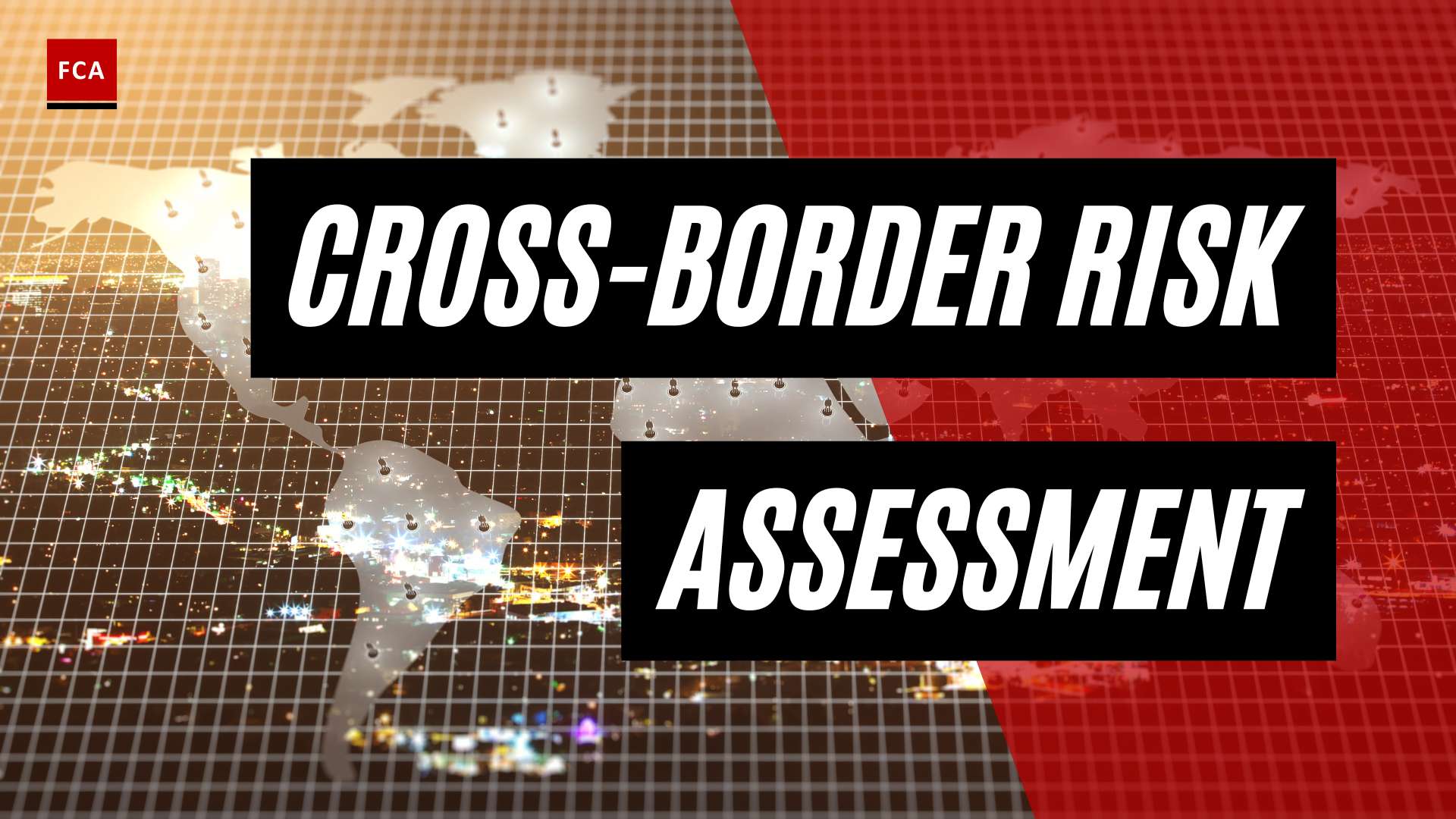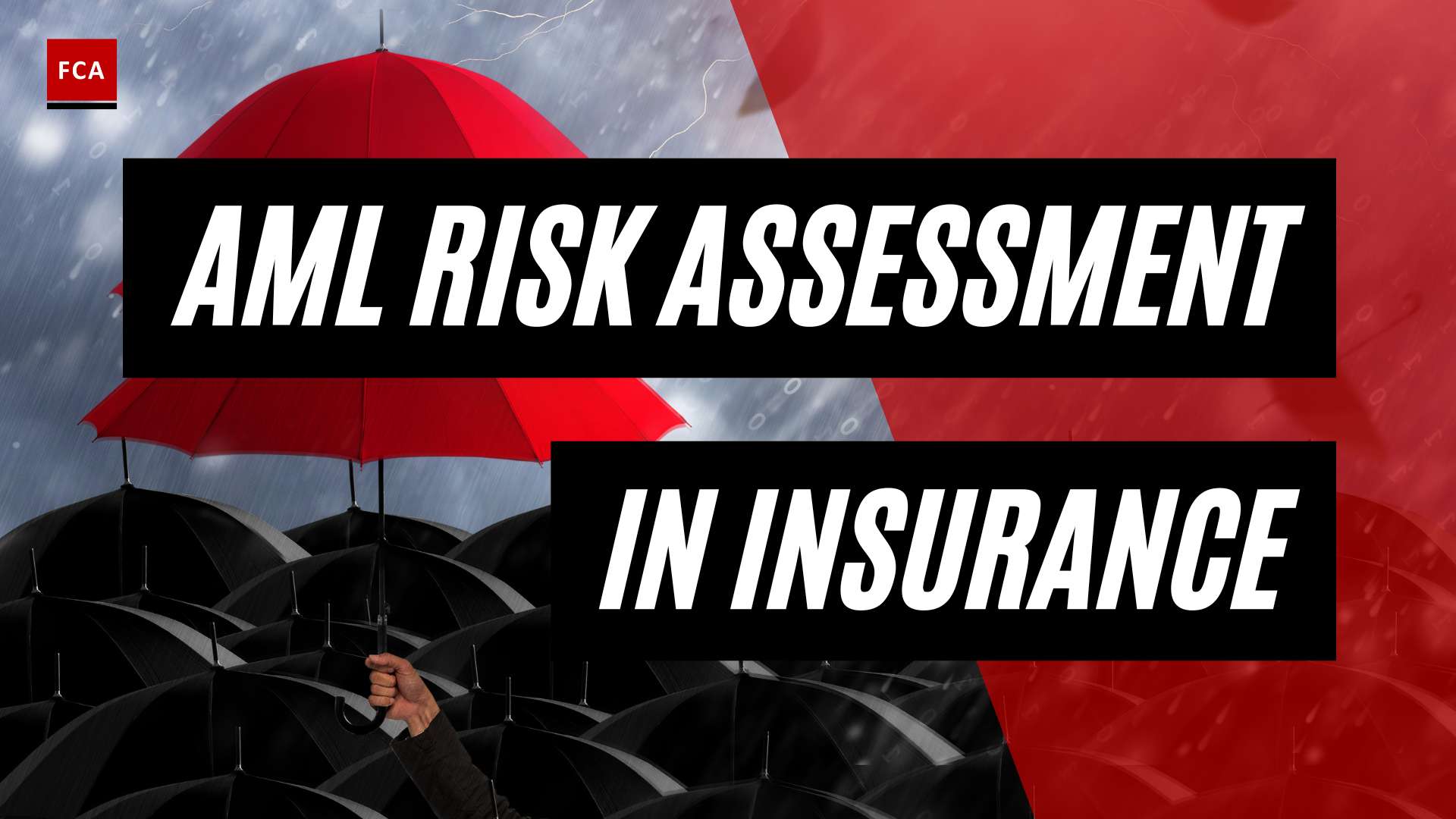The Importance of Regulatory Reporting
Regulatory reporting plays a crucial role in the financial industry, ensuring compliance, accountability, and managing risks. By adhering to regulatory reporting requirements, banks and financial institutions demonstrate their commitment to ethical standards, social responsibility, and the laws and regulations governing their operations.
Ensuring Compliance and Accountability
Regulatory reporting is essential for banks to ensure compliance with various AML regulations, such as AML regulatory compliance and AML reporting guidelines. It provides a framework for banks to monitor and report suspicious activities, transactions, and behaviors that may indicate money laundering or terrorist financing.
Properly implemented regulatory reporting policies and procedures help banks identify and mitigate risks associated with compliance, reinforcing stakeholders’ confidence in the bank’s regulatory procedures. By having data readily available, banks can trace back and pinpoint issues when they occur, demonstrating transparency and accountability (LinkedIn).
Legal and Economic Implications of Non-Compliance
Failure to comply with regulatory reporting requirements can have severe legal and economic repercussions for banks. Regulatory bodies impose significant fines and penalties for non-compliance, reflecting the importance of adhering to compliance policies. These fines not only impact a bank’s financial performance but also damage its reputation and stakeholder trust (LinkedIn).
By embracing regulatory reporting, banks demonstrate their commitment to regulations and ethics, mitigating legal and economic risks associated with non-compliance. It is crucial for banks to invest in robust AML reporting software, regulatory reporting training, and other resources to ensure accurate and timely reporting.
Managing Risks in Regulatory Reporting
Operational risks are inherent in regulatory reporting. Inadequate processes, technology, and systems can lead to financial performance risks, including employee errors, fraud, cyberattacks, and compliance issues. To mitigate these risks, banks must implement sound operational procedures and risk management systems.
Effective risk management involves establishing governance structures, policies, procedures, and control systems. Banks should identify, measure, and control risks associated with regulatory reporting. By doing so, they can enhance the accuracy and reliability of their reports and minimize operational risks (LinkedIn).
In summary, regulatory reporting is pivotal for banks and financial institutions to ensure compliance, accountability, and risk management. By embracing regulatory reporting requirements, banks can demonstrate their commitment to ethical standards, meet legal obligations, and maintain stakeholder trust. Investing in robust reporting systems, training, and risk management practices is crucial to effectively navigate the complexities of regulatory reporting.
The Role of Technology in Regulatory Reporting
In today’s complex regulatory landscape, the integration of technology has become essential for efficient and effective regulatory reporting. Regulatory reporting refers to the process of submitting accurate and timely reports to regulatory authorities to ensure compliance with applicable laws and regulations, such as AML regulatory compliance.
Introduction to RegTech
Regulatory Technology, commonly referred to as RegTech, has emerged as a game-changer in the financial services industry. RegTech solutions leverage advancements in data analytics, cloud computing, artificial intelligence, blockchain, and machine learning to streamline compliance processes and ensure regulatory reporting accuracy and efficiency (Safe Systems).
RegTech tools enable financial institutions to automate and optimize their regulatory compliance efforts. By utilizing these technologies, organizations can effectively interpret and apply regulatory requirements, thereby enhancing compliance and risk management efforts. These solutions have significantly transformed the way regulatory reporting is conducted, allowing financial institutions to keep pace with the evolving regulatory environment.
Advancements in RegTech Solutions
RegTech solutions have revolutionized the financial services industry by offering innovative approaches to regulatory compliance. These solutions have enhanced operational efficiency and improved risk management strategies. By automating manual processes and optimizing data management, RegTech tools enable financial institutions to accurately interpret regulatory requirements and deliver timely reports (Safe Systems). This ensures compliance with strict regulatory obligations, reducing the risk of non-compliance penalties and reputational damage.
The adoption of RegTech solutions has also resulted in significant cost savings for financial institutions. By streamlining compliance processes, reducing manual efforts, and minimizing the risk of errors, organizations can allocate resources more efficiently. This allows them to invest in other areas of their business while maintaining a robust compliance framework.
Benefits of Implementing RegTech
Implementing RegTech solutions offers several benefits for financial institutions and other organizations subject to regulatory reporting obligations. Some of these benefits include:
-
Enhanced Compliance: RegTech tools enable organizations to stay up to date with the ever-changing regulatory landscape. By automating compliance processes and providing real-time monitoring capabilities, RegTech solutions help organizations adapt to regulatory changes and ensure compliance with reporting requirements.
-
Improved Efficiency: The automation of regulatory reporting processes eliminates manual tasks, reduces the risk of human error, and improves overall operational efficiency. By streamlining data processes and leveraging advanced analytics, organizations can generate accurate reports more quickly and efficiently.
-
Cost Savings: The adoption of RegTech solutions helps financial institutions reduce compliance costs by eliminating manual efforts and optimizing resource allocation. This allows organizations to achieve compliance in a more cost-effective manner, freeing up resources for other strategic initiatives.
-
Risk Mitigation: RegTech tools provide organizations with advanced risk management capabilities. By leveraging technologies such as artificial intelligence and machine learning, organizations can identify and mitigate potential risks more effectively, enhancing their overall risk management framework.
By embracing technology and implementing RegTech solutions, organizations can revolutionize their regulatory reporting processes. These solutions help ensure accuracy, efficiency, and timeliness in compliance efforts, allowing organizations to navigate the regulatory landscape with confidence and focus on their long-term sustainability and growth.
Regulatory Reporting Requirements and Challenges
In the ever-evolving landscape of regulatory compliance, financial institutions face increasing regulatory reporting requirements that pose both challenges and opportunities. Compliance with these requirements is essential for maintaining accountability and transparency, as well as mitigating legal and economic risks associated with non-compliance. In this section, we will explore the evolving regulatory landscape, complexities in reporting systems, and the barriers posed by legacy systems in adopting new regulatory reporting technology.
Evolving Regulatory Landscape
The regulatory landscape for financial institutions is constantly evolving, with a significant increase in the number of global regulatory changes since 2011. According to EY, the number of regulatory changes facing financial institutions more than doubled from 8,653 to over 15,500 in 2018. Moreover, an average of 200 revisions to existing regulations are expected daily. This rapid pace of change requires financial institutions to stay agile and adapt their reporting processes to comply with new and revised regulations.
To effectively navigate the evolving regulatory landscape, financial institutions need robust AML regulatory compliance frameworks that encompass reporting guidelines, AML reporting software, and AML reporting training. Staying informed about regulatory changes and implementing proactive measures to meet reporting requirements is crucial for ensuring compliance and avoiding penalties.
Complexities in Reporting Systems
Regulatory reporting systems are becoming increasingly complex, driven by the need for financial institutions to process and report a growing volume of data to meet regulatory requirements such as BCBS 239, MiFID II, Basel III, and FATCA. These requirements demand accurate and timely reporting of various transactional and risk-related data. However, the sheer volume and granularity of data, coupled with the need to integrate data from multiple sources, pose significant challenges.
Financial institutions must invest in robust reporting systems that can handle the complexities of data aggregation, validation, and transformation. These systems should also ensure data integrity, consistency, and accuracy throughout the reporting process. By implementing advanced reporting technology, financial institutions can streamline their reporting systems, improve data quality, and enhance efficiency in meeting regulatory obligations.
Legacy Systems and Barriers to Adoption
Many financial institutions continue to rely on legacy systems that were not designed to handle the high volume and complexity of data required for regulatory reporting. These outdated systems often lack the flexibility, scalability, and integration capabilities necessary to adapt to changing regulatory requirements. As a result, financial institutions face significant challenges in generating accurate and timely reports, which can lead to compliance gaps and increased regulatory scrutiny.
To overcome these barriers, financial institutions are recognizing the need to modernize their regulatory reporting technology. Data engineering plays a crucial role in this process, enabling banks to streamline data processes, enhance data quality, and ensure timely and accurate reporting to regulatory authorities. Additionally, cloud services are being increasingly adopted due to their scalability, flexibility, and cost-effectiveness in managing large data volumes.
By embracing modern regulatory reporting technology and addressing the challenges posed by legacy systems, financial institutions can enhance their reporting capabilities, improve compliance, and effectively navigate the ever-changing regulatory landscape.
Key Areas of Investment in Regulatory Reporting Technology
In the ever-changing landscape of regulatory reporting, financial institutions are increasingly turning to technology to meet their compliance obligations. Within the realm of regulatory reporting technology, there are several key areas of investment that institutions are focusing on: risk and control solutions, financial crime solutions, and regulatory intelligence solutions.
Risk and Control Solutions
Financial institutions face a multitude of risks in their day-to-day operations. Implementing risk and control solutions as part of their regulatory reporting technology strategy is crucial to effectively manage these risks. These solutions provide mechanisms for identifying, assessing, and mitigating risks, ensuring compliance with regulatory requirements.
By leveraging risk and control solutions, institutions can establish robust internal control frameworks that enable a proactive approach to risk management. These solutions typically include features such as risk assessment tools, internal audit capabilities, and control testing mechanisms. They help in identifying potential compliance gaps, preventing fraud, and ensuring adherence to regulatory guidelines.
Financial Crime Solutions
Financial crime, including money laundering and fraud, poses significant challenges for financial institutions. As part of their regulatory reporting technology investments, institutions are seeking comprehensive financial crime solutions to detect and prevent illicit activities. These solutions utilize advanced technologies, such as artificial intelligence and machine learning, to analyze vast amounts of data and identify suspicious patterns or transactions.
Financial crime solutions provide institutions with the necessary tools to monitor customer transactions, screen against global watchlists, and generate suspicious activity reports. By automating these processes, institutions can reduce the risk of non-compliance with anti-money laundering (AML) and other financial crime regulations. For more information on AML reporting, refer to our article on AML regulatory reporting.
Regulatory Intelligence Solutions
Staying informed about the ever-evolving regulatory landscape is crucial for financial institutions. Regulatory intelligence solutions play a vital role in monitoring and interpreting regulatory changes, helping institutions adapt their reporting processes accordingly. These solutions provide real-time updates on regulatory developments, compliance obligations, and reporting guidelines.
Regulatory intelligence solutions enable institutions to stay ahead of regulatory changes and ensure their reporting practices remain aligned with the latest requirements. By leveraging these solutions, institutions can streamline their compliance efforts, reduce the risk of non-compliance, and proactively address reporting challenges. It is important to note that regulatory reporting requirements can vary across jurisdictions, and institutions must stay abreast of the specific guidelines relevant to their operations. For a deeper understanding of regulatory reporting requirements, see our article on regulatory reporting requirements.
In conclusion, financial institutions are investing in regulatory reporting technology to enhance their compliance efforts. By focusing on risk and control solutions, financial crime solutions, and regulatory intelligence solutions, institutions can streamline their reporting processes, improve data quality, and mitigate compliance risks. These investments not only ensure adherence to regulatory requirements but also contribute to better decision-making processes within financial institutions.
Modernizing Regulatory Reporting Technology
As regulatory reporting requirements become increasingly complex, financial institutions are turning to modern technology solutions to streamline their reporting processes. In particular, three key aspects of modern regulatory reporting technology are data engineering and cloud services, automation and artificial intelligence, and real-time monitoring and alerts.
Data Engineering and Cloud Services
Modernizing regulatory reporting technology often involves integrating data engineering and cloud services to improve efficiency and accuracy in reporting. Legacy systems in banks can be inefficient when it comes to handling the high volume of data required for regulatory reporting. By leveraging data engineering techniques and utilizing cloud services, financial institutions can overcome these challenges and ensure timely and accurate reporting to regulatory authorities (Global Banking & Finance Review).
Cloud services offer scalability, flexibility, and cost-effectiveness in managing large data volumes. Financial institutions can leverage cloud-based solutions to store, process, and analyze vast amounts of data, enabling them to meet regulatory reporting requirements effectively. The adoption of cloud services in regulatory reporting technology is on the rise due to the benefits it offers in terms of data management and infrastructure (Global Banking & Finance Review).
Data engineering plays a crucial role in modern regulatory reporting systems. It involves the collection, normalization, and transformation of data, ensuring its accuracy and integrity. By leveraging data engineering techniques, financial institutions can streamline their data processes, enhance data quality, and ensure compliance with regulatory reporting requirements (Global Banking & Finance Review).
Automation and Artificial Intelligence
Automation and artificial intelligence (AI) are revolutionizing the way regulatory reporting is conducted. These technologies enable financial institutions to automate data collection, normalization, and report generation, reducing the time and effort required for manual processes. By automating regulatory reporting, institutions can comply with regulations such as CCAR, DFAST, and MiFID II more efficiently (Hexanika).
AI-driven algorithms can analyze vast amounts of data, identify patterns, and detect anomalies, helping financial institutions identify potential risks and compliance issues. These technologies enable institutions to incorporate updates and changes in regulations swiftly, reducing the impact of compliance changes on the business (Hexanika). By reducing manual intervention, automation and AI enhance data quality, reduce errors and inconsistencies, and enable better decision-making processes within financial institutions.
Real-Time Monitoring and Alerts
Real-time monitoring and alerts are crucial components of modern regulatory reporting technology. Financial institutions need to be able to monitor their operations and detect any potential compliance breaches in real-time. By implementing real-time monitoring systems, institutions can identify and address compliance issues promptly, minimizing the risk of penalties, errors, or regulatory fines (Hexanika).
Real-time alerts notify institutions of any deviations from regulatory requirements, enabling them to take immediate corrective actions. These alerts can be triggered by predefined thresholds or through the use of AI algorithms that detect anomalies in data. Real-time monitoring and alerts provide financial institutions with a structured and efficient approach to managing regulatory reporting, ensuring that they can adapt to evolving regulatory requirements and market conditions effectively (Hexanika).
By modernizing regulatory reporting technology through the integration of data engineering and cloud services, automation and artificial intelligence, and real-time monitoring and alerts, financial institutions can enhance compliance, improve data quality, and adapt to changing regulatory landscapes. These technological advancements enable institutions to meet regulatory reporting requirements efficiently and effectively while mitigating risks and ensuring accountability.
Enhancing Compliance with Regulatory Reporting Technology
In the ever-evolving landscape of regulatory reporting requirements, financial institutions are increasingly turning to technology to enhance their compliance efforts. Regulatory reporting technology plays a crucial role in streamlining data processes, improving data quality and accuracy, and adapting to regulatory changes.
Streamlining Data Processes
Regulatory reporting involves collecting, analyzing, and submitting vast amounts of data to comply with various reporting requirements. Manual processes can be time-consuming, error-prone, and resource-intensive. However, implementing regulatory reporting technology can streamline these processes, leading to increased efficiency and reduced operational costs.
By leveraging automation and data integration capabilities, technology solutions can collect data from multiple sources, normalize it, and generate reports in a standardized format. This automation not only saves time but also reduces the risk of human errors and ensures consistency in reporting.
Improving Data Quality and Accuracy
Accurate and reliable data is essential for regulatory reporting. Manual data entry and reconciliation processes can introduce inconsistencies and errors, potentially leading to compliance issues. Regulatory reporting technology helps financial institutions improve data quality by minimizing errors and inconsistencies in reporting.
By automating data collection, validation, and reconciliation, technology solutions can identify discrepancies, errors, and missing data points in real-time. This proactive approach allows institutions to address issues promptly and ensures accurate and reliable reporting. Implementing data governance practices and data quality controls further strengthens the integrity of the data used for regulatory reporting.
Adapting to Regulatory Changes
The regulatory landscape is constantly evolving, with new reporting requirements and updates being introduced regularly. Financial institutions must stay up-to-date with these changes to ensure compliance. Regulatory reporting technology provides the flexibility and agility required to adapt to evolving regulatory requirements.
By utilizing configurable reporting frameworks and templates, technology solutions can easily accommodate changes in reporting guidelines and regulations. This adaptability allows financial institutions to quickly update their reporting processes and ensure they meet the latest compliance standards. Additionally, technology solutions often provide regulatory intelligence capabilities, keeping institutions informed about regulatory changes and helping them proactively address new reporting requirements.
Implementing regulatory reporting technology not only enhances compliance but also improves data quality and accuracy. By streamlining data processes, financial institutions can save time and resources while ensuring accurate and reliable reporting. The adaptability of technology solutions allows institutions to stay ahead of regulatory changes and effectively meet their reporting obligations. With the power of regulatory reporting technology, financial institutions can navigate the complex world of compliance with confidence.
The Future of Regulatory Reporting Technology
As the regulatory landscape continues to evolve, the adoption of regulatory reporting technology has become increasingly vital for financial institutions to navigate the complex and ever-changing compliance requirements. RegTech, short for regulatory technology, has emerged as a powerful tool in revolutionizing the way regulatory reporting is managed and executed. In this section, we will explore the growth of RegTech investments, global trends and forecasts, as well as innovations and advancements in RegTech.
Growth of RegTech Investments
RegTech investments have been experiencing rapid growth in the financial services industry. According to FINRA, global RegTech spending is forecasted to reach $76 billion by 2022, a significant increase from $10.6 billion in 2017. This substantial investment reflects the industry’s recognition of the value and potential of RegTech solutions in enhancing compliance, risk management, and regulatory reporting processes.
Financial institutions are increasingly embracing RegTech, with 75% of them having either implemented or planning to implement regulatory technology solutions within the next three years, as reported by EY. This widespread adoption demonstrates the growing importance of leveraging technology to streamline and optimize regulatory reporting procedures.
Global Trends and Forecasts
The demand for regulatory reporting technology is expected to continue its upward trajectory. By 2023, the market for regulatory reporting technology is projected to surpass $11 billion, according to EY. This forecast highlights the industry’s recognition of the need for efficient and effective solutions to address the complexities and challenges associated with regulatory reporting requirements.
Financial institutions face a continually expanding set of regulatory changes, with the number of global regulatory changes more than doubling since 2011, reaching over 15,500 in 2018, as stated by EY. This trend is expected to persist, with an average of 200 revisions to existing regulations occurring daily. To keep pace with these regulatory changes and ensure compliance, financial institutions will increasingly rely on innovative RegTech solutions that streamline reporting processes and facilitate accurate interpretation of evolving regulatory requirements.
Innovations and Advancements in RegTech
The ongoing advancements in RegTech have significantly transformed the financial services industry. RegTech solutions leverage technology to streamline compliance procedures, enhance data management, and ensure adherence to complex and evolving rules, as highlighted by Medium.
Automation plays a crucial role in RegTech, enabling financial institutions to streamline regulatory processes, accurately interpret regulatory requirements, and deliver timely reports. By automating these tasks, RegTech solutions improve the efficiency and accuracy of regulatory reporting, as noted by Safe Systems. This automation not only reduces compliance costs but also minimizes the risk of non-compliance penalties and reputational damage.
The integration of data engineering, cloud services, automation, artificial intelligence, real-time monitoring, and alerts has revolutionized regulatory reporting technology. These innovative technologies enable financial institutions to streamline data processes, improve data quality and accuracy, and adapt quickly to regulatory changes. By harnessing the power of RegTech, financial institutions can enhance compliance, mitigate risks, and ensure long-term sustainability and growth, as emphasized by Safe Systems.
As regulatory reporting technology continues to evolve, it will play an increasingly critical role in helping financial institutions navigate the complex and dynamic regulatory landscape. The growth of RegTech investments, global trends and forecasts, and continuous innovations in the field are clear indicators of the industry’s recognition of the transformative power of regulatory reporting technology. Embracing these advancements will enable financial institutions to stay ahead of regulatory requirements, enhance compliance, and achieve operational excellence in the years to come.








